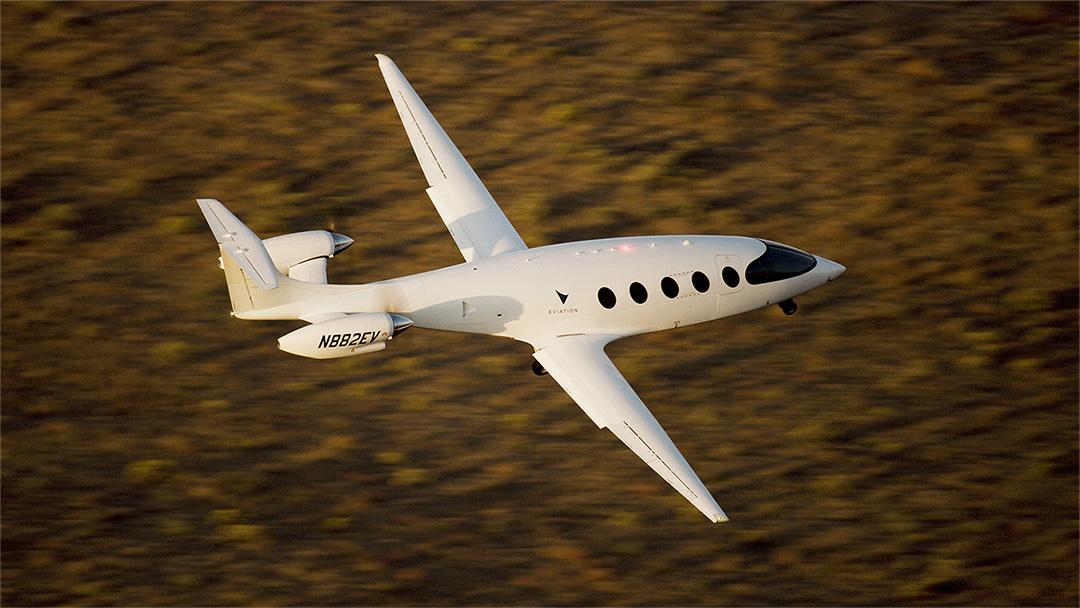
The Alice can carry one or two pilots and nine passengers up to 250 nm, including reserves, at a maximum speed of about 260 kt.
Electric aircraft startup Eviation has spent much of the last year analyzing terabytes of ground and flight test data since its prototype Alice last flew in September 2022, and is preparing to close the final design loop for the production version Alice, with only “minor refinements” expected, CEO Gregory Davis tells the AAM Report in an interview.
“We’re tweaking things like the actual dimensions of the wing, the thickness of the wing, the specific positions of the windows in the cabin,” Davis says, adding that he does not expect any drastic changes from the prototype to the production configuration version. “If you put the two next to each other, you may notice some differences, but nothing radical.”
Eviation has enlisted Seattle-based engineering firm TLG Aerospace for work on the design of the production configuration airplane. Davis said the company chose TLG because it is “expert at conceptual design activity ... they’ve got all the right tools, the right experience and databases–we would need to develop all of that to go through the conceptual design process on our own.
“We want it to be producible, so we want to make sure we’ve got common parts in different sides of the aircraft and so on, so it’s that refinement that TLG is really helping with,” Davis says. “Just to be clear, our team is actively working side by side with TLG. We’re not just handing over the work. It’s a collaboration.”
Conclusion of the conceptual design phase will allow Eviation to lock in its final roster of suppliers for the production version Alice. The company has been going through the request for information process with the supply chain for the entire aircraft, soliciting information from suppliers and building up a database of available technology and components. “We need to understand what’s available on the market, and then fit that into the design of the aircraft,” Davis says.
The next major program milestone will be wind tunnel later this year, which will be performed with a scale model of the new aircraft design. “That next plane that we take through the wind tunnel will look exactly like the one that gets delivered to customers,” Davis says.
With a conditional backlog worth more than $5 billion, the Arlington, Washington-based startup boasts one of the largest orderbooks in the advanced air mobility (AAM) industry.
The company’s sales success was further validated through a recent order earlier this month for 25 aircraft with options for up to 25 more from South Korean lessor Solyu.
Commenting on the sale, Davis said he is excited to continue to expand Eviation’s presence into markets in East Asia, where he observes there is huge demand for affordable regional air travel.
“The busiest air route in the world is actually Jeju to Seoul Gimpo Airport, which is about 280 statute miles, right on the edge of that 250-nm range that we’re targeting at entry into service,” Davis says. “That’s just one example. There are all sorts of opportunities in neighboring cities in Korea, as well as similar routes in Japan, Taiwan, Singapore and elsewhere in the region.”
Eviation estimates the Alice will have operating costs between 30% and 70% lower than similarly sized conventionally powered airplanes.
The company expects the Alice to enter into commercial service in 2027.
